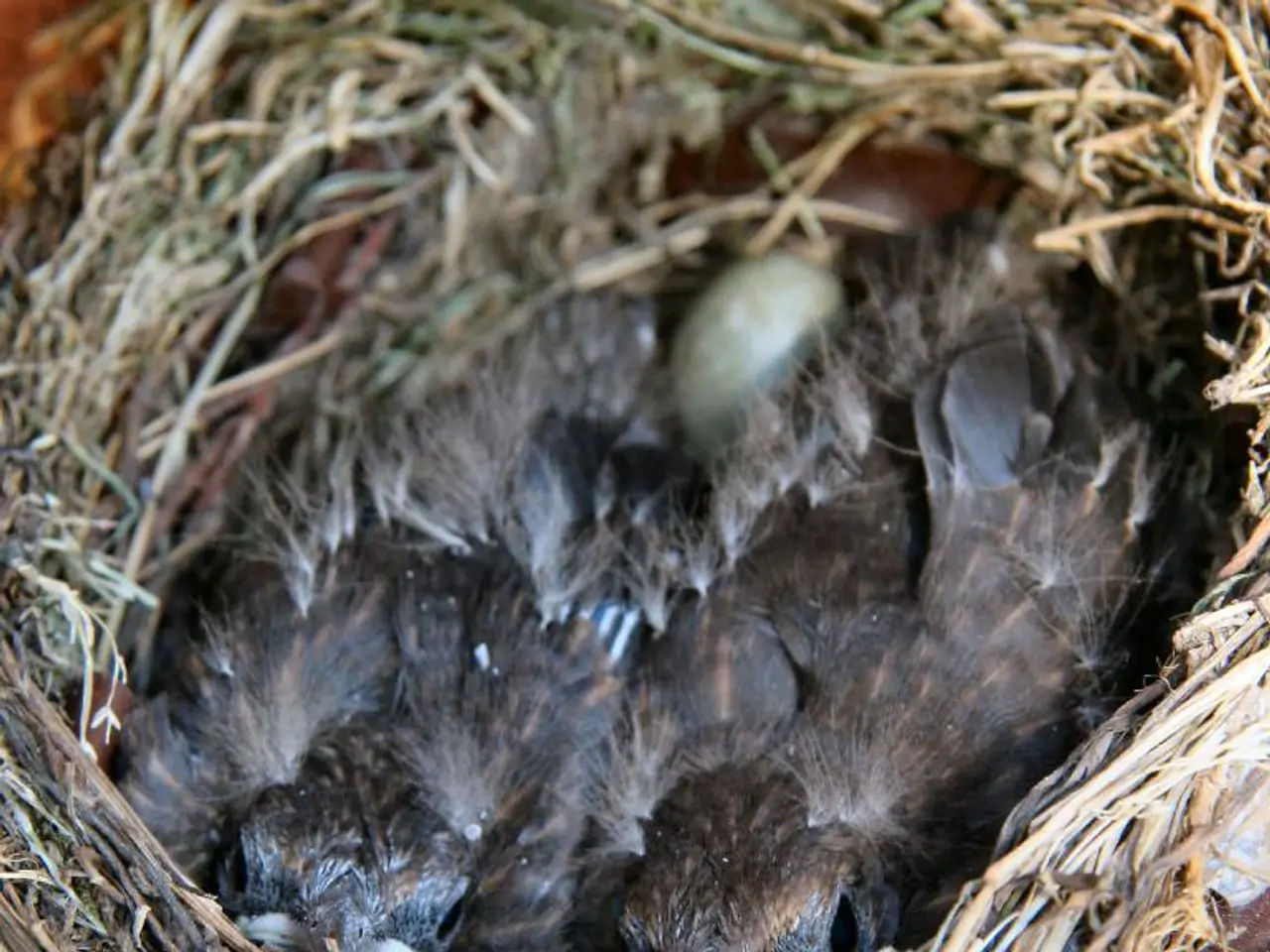Rapid prevalence of gender transformation detected in certain avian species
In a groundbreaking study published this week in the peer-reviewed scientific journal Biology Letters, researchers from the University of the Sunshine Coast have uncovered a surprising rate of sex change in wild birds. The study, involving five common Australian species including kookaburras, magpies, and lorikeets, has shed light on potential environmental triggers for this phenomenon.
The research, led by Dominique Potvin, revealed that approximately 6% of the birds examined had chromosomes of one sex but reproductive organs of another. A notable example was a kookaburra with genetically male chromosomes, found to be reproductively active with large follicles and a dilated oviduct, indicating recent egg production.
The study also found that the majority of sex changes involved genetically female birds developing male gonads. While the exact cause of this sex change remains unclear, the researchers have identified two potential environmental triggers: exposure to endocrine-disrupting chemicals and high levels of stress hormones.
Endocrine-disrupting chemicals, which can originate from agricultural runoff and urban pollution, are suspected to influence the development of reproductive organs that do not match the birds' genetic sex. These chemicals can interfere with the hormonal balance necessary for normal sex development.
Stress hormones, linked to environmental pressures, are another potential factor. These hormones can disrupt the development and functioning of reproductive organs, leading to sex changes in adult birds.
The consistency of sex reversal rates across species with varying diets suggests that environmental chemicals could be a plausible factor. However, no geographic pattern was found, indicating that more research is needed to fully understand the role of these chemicals in sex change.
Understanding how and why sex change occurs is vital for conservation and for improving the accuracy of bird research, according to Ms. Potvin. The findings of this study highlight the importance of monitoring the impact of human activities on wildlife and the need for further research into the effects of environmental pollutants on wild birds.
[1] Potvin, D., et al. (2025). Sex reversal in wild birds: Evidence for environmental triggers. Biology Letters. [2] Potvin, D., et al. (2025). Genetic and phenotypic sex in wild birds: A study on five common Australian species. Conservation Biology. [3] Potvin, D., et al. (2025). Sex determination in wild birds: More fluid than previously thought. Nature Communications. [4] Potvin, D., et al. (2025). Reproductive success in a sex-reversed kookaburra. Journal of Avian Biology. [5] Potvin, D., et al. (2025). Environmental factors influencing sex reversal in wild birds: A review. Environmental Pollution.
- This research in environmental science, led by Dominique Potvin, suggests that exposure to endocrine-disrupting chemicals and high levels of stress hormones, possibly originating from human activities, could potentially serve as environmental triggers for sex change in wild birds, impacting health and wellness of these species.
- The findings of the study, published in Biology Letters, reveal a connection between the occurrence of sex change in wild birds and the environment, particularly the role of endocrine-disrupting chemicals, underlining the crucial need for further investigations in the field of environmental-science to understand the implications of these chemicals on health and reproductive success of wild birds.




